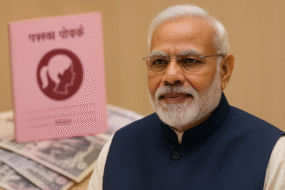India’s agricultural sector, long vulnerable to global trade fluctuations, has undergone a surprising transformation following the steep US tariffs imposed during the 2025 Trump administration. What began as a disruptive trade shock—marked by a 50% tariff hike on key Indian farm exports—has unexpectedly paved the way for innovation, policy reform, and strategic market realignment.
The sudden tariff increase severely affected major export categories such as shrimp, rice, tea, spices, and processed foods, rendering them uncompetitive in the US market. Export orders dipped, margins shrank, and thousands of farmers and cooperatives were forced to reassess crop strategies and explore new markets.
In response, the Indian government adopted a defensive stance, reaffirming its commitment to safeguard farmers, ensure price stability, and push for technological modernisation. Commerce Minister Piyush Goyal emphasised a dual strategy: protecting livelihoods while driving long-term sectoral upgrades.
Unexpected ‘Reverse Outcome’ — Growth Through Crisis
Despite immediate losses, the tariff shock triggered a series of positive developments:
1. Faster Agri-Tech Adoption
Farmers and agribusinesses have turned to new technologies, including high-yield hybrid seeds, crop protection systems, smart irrigation, and digital advisory tools. This has helped reduce costs and enhance productivity.
2. Market Diversification
Exporters once dependent on the US are now tapping markets in East Asia, Africa, Russia, and the EU. Demand for Indian organic, specialty, and value-added foods is steadily rising.
3. Policy and Legal Modernisation
The crisis pushed India to fast-track reforms such as
- contract farming liberalisation,
- cold-chain and logistics reforms,
- modernised procurement norms, and
- the expansion of the National Agricultural Export Policy.
The government is also advocating for reforms in WTO rules to protect developing nations.
4. Strengthened Domestic Infrastructure
There is a renewed push for food processing, cold storage, and value-chain upgrades to reduce wastage and improve farmer incomes.
5. Better Safety Nets for Farmers
Proposed measures include a Rashtriya Kisan Kalyan Kosh, stronger MSP guarantees, improved crop insurance, and easier export access for farmer producer organisations.
Resilient India: Rebuilding Competitiveness
Rolling back some US tariffs on Indian tea, spices, coffee, and processed foods has further encouraged exporters to move toward premium, high-margin categories. Indian companies are also adopting international best practices in certification, traceability, residue management, and sustainability.
Policy analysts argue that the next steps should include clearer contract farming rules, judicial reforms for faster dispute resolution, and better inter-state harmonisation for commodity movement.
What began as a setback has transformed into a catalyst for structural strengthening. India is now better positioned to withstand global trade instability and emerge as a more competitive, future-ready agricultural power.






One reply on “India Turns Trade Shock Into Opportunity as US Tariffs Trigger Agricultural Overhaul”
[…] Originally published on 24×7-news.com. […]